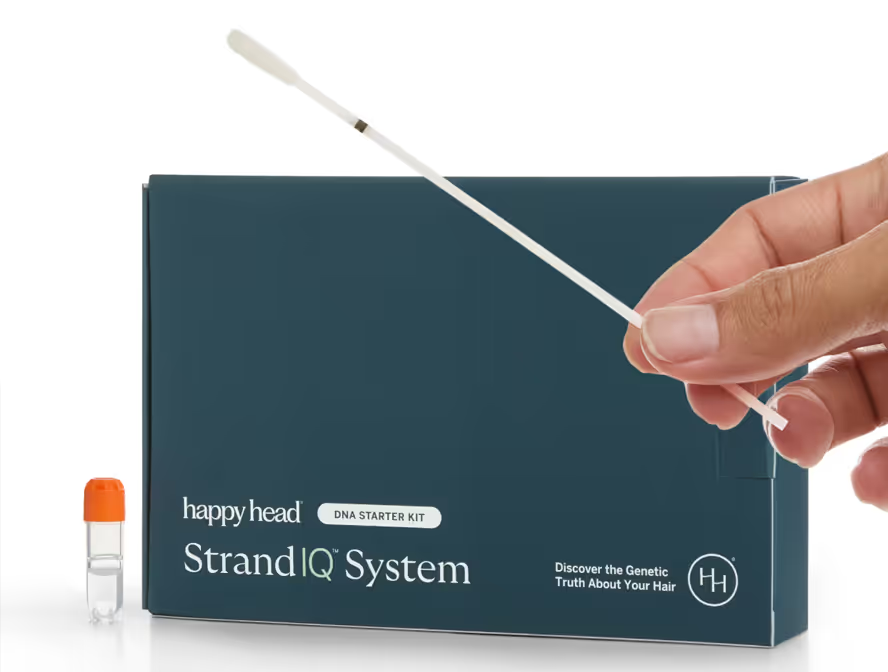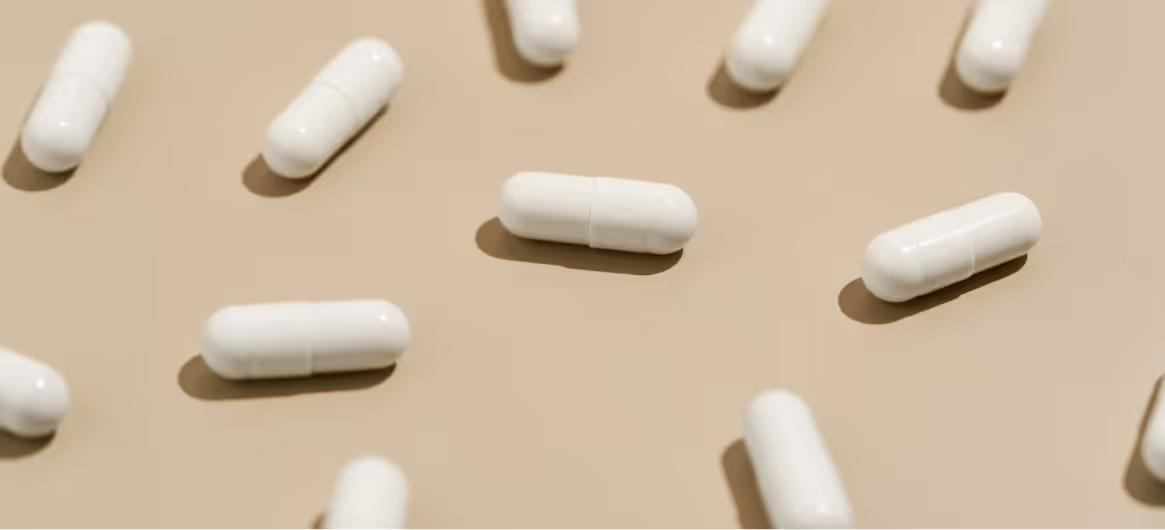Vitamin B7, also known as biotin, is a water-soluble nutrient essential for strong, resilient hair. Often labeled as a “hair vitamin,” it plays a central role in keratin production and energy metabolism within hair root cells.
But here’s the catch: not everyone processes biotin efficiently. If you carry genetic variants that reduce the activity of biotinidase—the enzyme that helps your body recycle and reuse biotin—you may be more prone to low functional levels, even if your diet looks healthy on the surface.
Biotin and Its Role in Hair Growth and Structure
Your hair growth cycle relies on a steady supply of micronutrients to keep follicles energized and keratin synthesis running smoothly. Biotin helps convert the food you eat into usable energy for rapidly dividing cells in your scalp and hair roots. When your body can’t access or retain biotin efficiently, the result may show up as:
- excess hair shedding
- brittle, slow-growing nails
- dull or dry skin
While biotin deficiencies are rare in the general population, genetic variations can subtly lower available levels, increasing vulnerability under stress, illness, pregnancy or with certain medications.
Tailored Biotin Recommendations by Genetic Risk Level
Based on your genetic profile, your body’s ability to process and retain biotin may vary. These recommendations are tailored to support optimal scalp and hair health for each Happy Head StrandIQ-identified risk level.
Low risk: Maintain with whole foods and light support
If your genetic analysis places you at low risk of vitamin B7 deficiency, then small changes may be all you need to get your scalp looking and feeling its best.
- Focus on whole foods
Eat biotin-rich foods like eggs, salmon, seeds, and leafy greens to nourish your scalp and hair from the inside out. - Supplement if needed
If you’re noticing brittle nails or hair texture changes, a low-dose biotin supplement (30 to 100 mcg/day) may provide support. - Biotin in hair care
Look for shampoos, conditioners, or serums with added biotin to boost shine, texture, and strength over time.
Medium risk: Strengthen your intake and routine
If your StrandIQ analysis identified you as being at a moderate risk for vitamin B7 deficiency, or if you’re noticing persistent hair breakage and shedding despite simpler interventions, it may be time to step up your routine:
- Prioritize biotin-rich meals
Add more eggs, nuts, liver, salmon, and leafy greens into your weekly rotation. - Daily biotin supplementation
A modest supplement (100 to 500 mcg/day) may help support hair structure if you notice early signs of brittleness or shedding. - Consistency matters
Hair products with biotin can be more effective when used consistently as part of your regular scalp care regimen.
High risk: Targeted cosmetic support based on genetic insights
- Monitor symptoms closely
Watch for signs of deficiency like thinning hair, brittle nails, dry skin, or fatigue, and track changes with your healthcare provider. - Consider high dose supplements
If you're pregnant, a smoker, or taking anticonvulsants like carbamazepine, phenobarbital, or phenytoin, your biotin needs may be higher. Check with your Happy Head provider before starting high-dose supplements. - Monitor personal care use
Biotin-infused skincare and hair products can be helpful, but they won’t correct internal deficiencies. Combine with diet or supplementation as needed.
Biotin Isn’t a Miracle—But it is Essential
Despite the hype, biotin won’t magically regrow lost hair overnight. However, it plays a key foundational role in maintaining a healthy hair growth environment, especially when tailored to your genetic profile.
Whether you're managing postpartum hair changes, stress-related shedding or just looking to improve strength and shine, understanding your body’s ability to metabolize biotin and creating a personalized plan with your Happy Head care team is a smart starting point for preventive scalp care.
Resources
StrandIQ SNP Marker Count: 28
StrandIQ Genes for Trait:
vitaminB7-deficiency, 45 SNPs in ADH4, ANKRD28, APOH, BTD, C3orf20, CATSPER2, CHPT1, COL6A4P1, FADS1, FADS2, FGD5, GALNT15, GCKR, GNPTAB, HPR, IMPDH1P8, JMJD1C, NR2C2, NRTN, OXNAD1, PLG, RFTN1, RPS3AP53, SH3BP5
References
Borsatto, T., et al. (2014). Biotinidase deficiency: clinical and genetic studies of 38 Brazilian patients. BMC Medical Genetics, 15, 96. PMID: 25174816.
Hsu, R.H., et al. (2019). Genotypic and phenotypic correlations of biotinidase deficiency in the Chinese population. Orphanet Journal of Rare Diseases, 14(1), 6. PMID: 30616616.
Liu, Z., et al. (2018). Clinical features, BTD gene mutations, and their functional studies of eight symptomatic patients with biotinidase deficiency from Southern China. American Journal of Medical Genetics Part A, 176(3), 589–596. PMID: 29359854.
Loya, H., et al. (2025). A scalable variational inference approach for increased mixed-model association power. Nature Genetics, 57(2), 461–468. PMID: 39789286.
Oz, O., et al. (2021). BTD gene mutations in biotinidase deficiency: genotype–phenotype correlation. Journal of the College of Physicians and Surgeons Pakistan, 31(7), 780–785. PMID: 34271776.
Pietzner, M., et al. (2021). Mapping the proteo-genomic convergence of human diseases. Science, 374(6569), eabj1541. PMID: 34648354.
This content, including StrandIQ™ DNA analysis reports and any Happy Head products and/or services referenced therein, is for informational and cosmetic purposes only. It is not intended to diagnose, treat, cure, or prevent any disease. This content does not constitute medical advice and should not be used to make healthcare decisions. References to prescription treatments are educational in nature. Always consult a licensed healthcare professional for any medical concerns or treatment decisions.








.avif)

